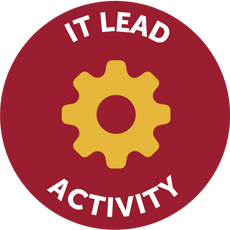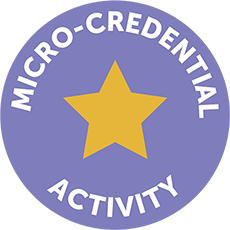Data Landscape and Data Flow Mapping
Overview
Begin to visualize your district’s data landscape and map its data flows using the data sources, systems, and sharing processes highlighted in stakeholder discussions. For purposes of the Playbook, Digital Promise defines data landscape and data flow as:
- Data Landscape: the sources of data identified in stakeholder discussions in your district, whether they be data sources you own/steward or data sources you use from another area; the personnel who steward the data and systems, manage access, and/or procure data.
- Data Flow: describes each source’s role as a supplier or consumer of data

Note:
This activity requires the participation of your district’s IT Lead.
Data Sources


Use the template labeled “Data Landscape Template 2.0” in your resources folder to organize the data sources that emerge in your district’s stakeholder discussions and workshops. Let’s try the activity below.
Personal Identifiable Information (PII)
PII stands for Personally Identifiable Information. It refers to any data or information that can be used to identify a specific individual. Examples of PII include a person’s name, address, phone number, email address, date of birth, Social Security number, driver’s license number, passport number, and biometric data such as fingerprints or facial recognition data.
Student PII is often collected and used by educational institutions to manage student records, communicate with students and families, provide academic and support services, and comply with legal and regulatory requirements. It is important for educational institutions to protect student PII and comply with relevant data privacy laws, such as the Family Educational Rights and Privacy Act (FERPA) in the United States.
Personal Identifiable Information (PII) may be broken down into two categories: Direct Identifiers and Indirect Identifiers.
Direct identifiers are specific pieces of information that can be used to directly identify an individual. Examples of student direct identifiers PII include:
- Name: A student’s full name is a direct identifier that can be used to identify them.
- Student ID number: A unique student identification number assigned by the school is a direct identifier that can be used to identify a student.
- Social Security Number: In some cases, a student’s Social Security number may be used as a direct identifier.
- Email address: A student’s email address can be used to directly identify them.
- Phone number: A student’s phone number can be used to directly identify them.
- Address: A student’s address, such as their home address or school address, can be used to directly identify them.
- Date of Birth: A student’s date of birth can be used as a direct identifier.
- Biometric data: Biometric data, such as fingerprints or facial recognition data, can be used as direct identifiers.
It’s important to protect these direct identifiers and handle them with care to avoid any misuse or breach of privacy.
Indirect identifiers include information that can be combined with other information to identify specific individuals. For example, a combination of gender, birth date, geographic indicator, and other descriptors. Some examples of indirect student PII include:
- Class schedule: While a class schedule may not directly identify a student, it could potentially be used in combination with other information (such as a student’s name or course grades) to identify an individual.
- Demographic information: Demographic information, such as a student’s age, gender, or race, may not directly identify an individual, but could potentially be combined with other data to identify a student.
- Location information: Information about a student’s location, such as the school they attend or the city they live in, may not directly identify a student, but could potentially be combined with other information to identify an individual.
- Test scores: While individual test scores may not directly identify a student, they could potentially be used in combination with other information (such as a student’s name or demographic information) to identify an individual.
- Coursework: Information about a student’s coursework, such as the classes they have taken or the grades they have earned, may not directly identify a student, but could potentially be combined with other data to identify an individual.
- Gender
- Grade Level
- GPA
Let’s test your knowledge of direct and indirect identifiers. Sort sample student data by choosing the correct category below.